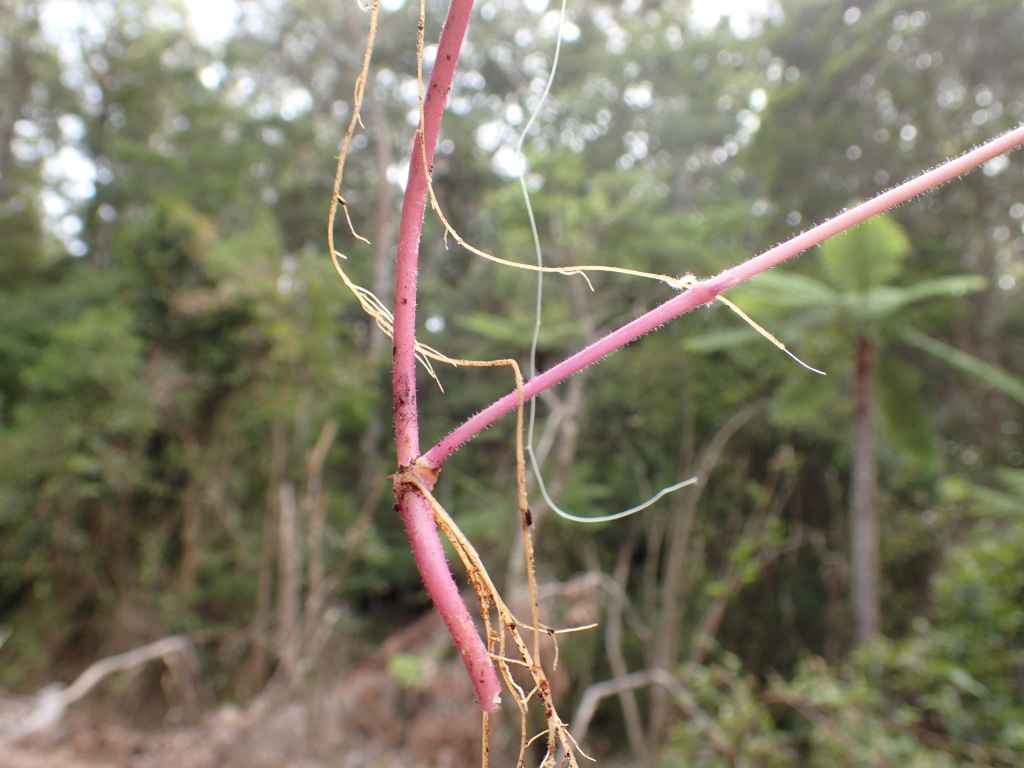Veronica grosseserrata
B.G.Briggs & Ehrend.Stoloniferous, procumbent perennial; flowering stems (8–)12–30(–45) cm long, hairs mostly short, rigid, antrorsely curved. Leaves lanceolate or triangular, mostly 12–65 mm long, 6–35 mm wide, apex acute, base broadly cuneate or truncate, margins serrate with 6–12 apiculate, uneven, spreading teeth on each side, with short curved hairs on upper surface, margins, veins on lower surface, and sometimes also sparsely hairy between veins on lower surface; petiole 5–12(–17) mm long. Racemes lateral, (45–)60–140(–160) mm long, with (6–)10–16(–20) flowers; peduncle (10–)15–40(–60) mm long; bracts 4–6 mm long; fruiting pedicels spreading, 6–13 mm long. Calyx lobes 5–8 mm long, 1.5–3.5 mm wide in fruit, margins finely ciliate; corolla 3–6(–8) mm long, lavender or white, with darker veins. Capsule slightly emarginate, 4–5 mm long and slightly broader, glabrous or with a few short hairs on and near upper margins; style ± equal to fruit length. Flowers spring–autumn.
VVP, GipP, EGL, EGU, HSF, HNF, OtR, HFE. Also Qld, NSW, ACT. Apparently uncommon in rainforest and wet sclerophyll forest east from c. Bairnsdale, with an isolated occurrence in the Healesville–Narbethong area.
This species may hybridize with Veronica notabilis given that plants of intermediate morphology have been collected where the two species occur together. These hybrids are likely to be sterile given that Veronica grosseserrata is octoploid and V. notabilis is tetraploid (Briggs & Ehrendorfer 2006).
 Spinning
SpinningSynonyms
Briggs, B.G.; Ehrendorfer, F. (2006). New Australian species and typifications in Veronica sens. lat. (Plantaginaceae). . Telopea 11(3): 276–292.


